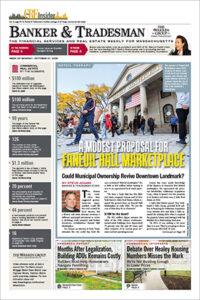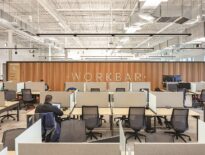
Lloyd Sova
While the “retail rebound” of 2022 has engendered a hopeful end to the “retail apocalypse,” there remain many former shopping malls that, unable to survive a recession and the COVID-19 pandemic and no longer relevant, now need to be redeveloped.
The mall experience of the past, however, may be just that – part of the past. A new iteration of the shopping mall is needed, one that benefits not only retailers, but also consumers who want convenience and more from their in-person shopping experience than large anchor department stores and unique boutiques.
The writing on the shopping mall wall has been legible since the 2008 Great Recession, initializing a slow but steady decline that was accelerated by the pandemic. Two-plus years of largely online shopping forced hundreds of retailers into bankruptcy and turned already struggling malls into ghost ships. Additionally, communities that relied on mall’s property taxes to fund basic services were particularly hard hit.
Then the world began to reopen and with that a reignition of on-site consumer spending, leading to a need to redevelop former mall and retail strip sites to meet new relevancy standards. But breathing new life into a flat-line property requires creativity and an ear to the pulse of what the public wants and needs today and in the future.
Presently, there is a rise in the concept of what has been termed an “urban setting in suburbia.” Its meaning is just what it implies: a suburban area that has a city feel, where consumers can walk from their residences to retail stores, restaurants, entertainment venues and public transportation, to name just a few draws.
After three years in varying degrees of isolation, people are hungry for in-person experiences and entertainment. As such, retail property owners now need to create environments that focus less on material inventory and more on a total shopping experience – mindful open-air meeting places where consumers of all socio-economic means can come to walk around, shop, dine, be entertained and just enjoy the experience. These redeveloped centers must also be convenient. They must provide a shopper the opportunity to get in and out and on their way.
Cinemas are a prime example of a successful retail sector in this post-pandemic era. Prior to the virus outbreak, cinemas had already reinvented themselves by offering an “experience” with reserved seating, in-theater restaurants and bars, 4DX visuals and more. This trend is poised to return in a big way with blockbuster sequels and franchise movies once again being produced.
Now we’re seeing even more options in the entertainment offerings. Video arcades of the 1980s tucked in between fashion retail have been transformed into freestanding destinations all their own, with much more thought and care taken with regard to the visitor’s overall experience. In addition to arcade games, we see fantastic complexes that also include activities like bowling, axe-throwing, virtual reality and laser tag – as well as their own food and beverage options!
The future of the mall properties of yesterday rests on the demands of today’s consumer and today’s consumer wants more than just a retail experience. Dining, grocery shopping, entertainment, banking, hotels, medical facilities and fitness centers, all within walkable distance – that’s what is in store.
Lloyd Sova is vice president of development for PREP Property Group, which owns the Hanover Crossing lifestyle center in Hanover.





